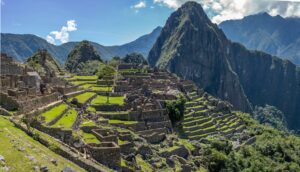When we savor a cup of our favorite coffee, the rich flavors, vibrant aromas, and unique tasting notes are the result of a complex journey from the coffee farm to our mugs. One essential factor that significantly influences the quality of coffee is the altitude at which it’s grown. In this exploration, we delve into the world of high-altitude coffee harvesting and uncover how it elevates the quality of your coffee beans.
Colombia’s High-Altitude Coffee Regions
Colombia, with its diverse topography and varying altitudes, is home to a wide range of coffee-growing regions. Some of the most renowned areas include Antioquia, Tolima, Nariño, Huila, Cauca, and Sierra Nevada. These regions are characterized by their elevated altitudes, which are among the highest in the world. Colombian coffee farms are often perched at altitudes ranging from 1,200 meters to 1,800 meters (4,000 to 6,000 feet) above sea level.
The Altitude Advantage: Slower Maturation and Complex Flavors
Coffee cultivated at higher altitudes experiences a slower maturation process. The cooler temperatures and increased oxygen content at these elevations allow coffee cherries to ripen more gradually, resulting in a denser bean with more complex flavors. This slower maturation also contributes to higher levels of acidity, a prized characteristic in specialty coffee.
Bright Acidity and Distinctive Flavors
High-altitude coffee beans are celebrated for their bright acidity and lively flavors. The altitude’s impact on the coffee’s chemical composition results in nuanced and vibrant taste profiles. Coffee grown at higher elevations tends to exhibit notes of citrus, floral, and fruity flavors, with a pleasant and clean aftertaste. These unique characteristics distinguish high-altitude coffee from beans grown at lower elevations.
Enhanced Bean Hardness
The slow maturation process at high altitudes results in coffee beans with higher density and hardness. This attribute is especially valuable during the roasting process, as it allows for more consistent heat transfer. The result is a coffee that can be roasted to perfection, bringing out the full potential of its flavor profile.
Consistent Rainfall and Shade
High-altitude coffee regions often benefit from consistent rainfall and shade provided by surrounding forests or canopy trees. These conditions help maintain the ideal moisture levels in the soil and protect coffee plants from harsh sunlight, both of which contribute to a healthy and thriving coffee crop.
Sustainable Farming Practices
Many high-altitude coffee farms in Colombia prioritize sustainability and eco-friendly practices. The combination of these practices with the unique altitude-based attributes of the land results in coffee that is not only exceptional in flavor but also responsibly produced.
The Cafe Tesoro Difference
At Cafe Tesoro, we understand the intrinsic value of high-altitude coffee. Our beans are carefully sourced from Colombia’s renowned coffee regions, ensuring that you experience the rich and distinctive flavors that only high-altitude harvesting can provide. Each cup of Cafe Tesoro coffee is a testament to the altitude’s influence on quality, offering you a delightful and flavorful journey with every sip.
In conclusion, the impact of altitude on coffee quality is a fascinating journey that showcases the intricacies of coffee cultivation. High-altitude coffee regions in Colombia provide a unique environment that results in beans with complex flavors, bright acidity, and exceptional density. At Cafe Tesoro, we’re proud to share the bounty of these high-altitude coffee farms, bringing you the exquisite flavors and aromas that elevate your coffee experience to new heights.






